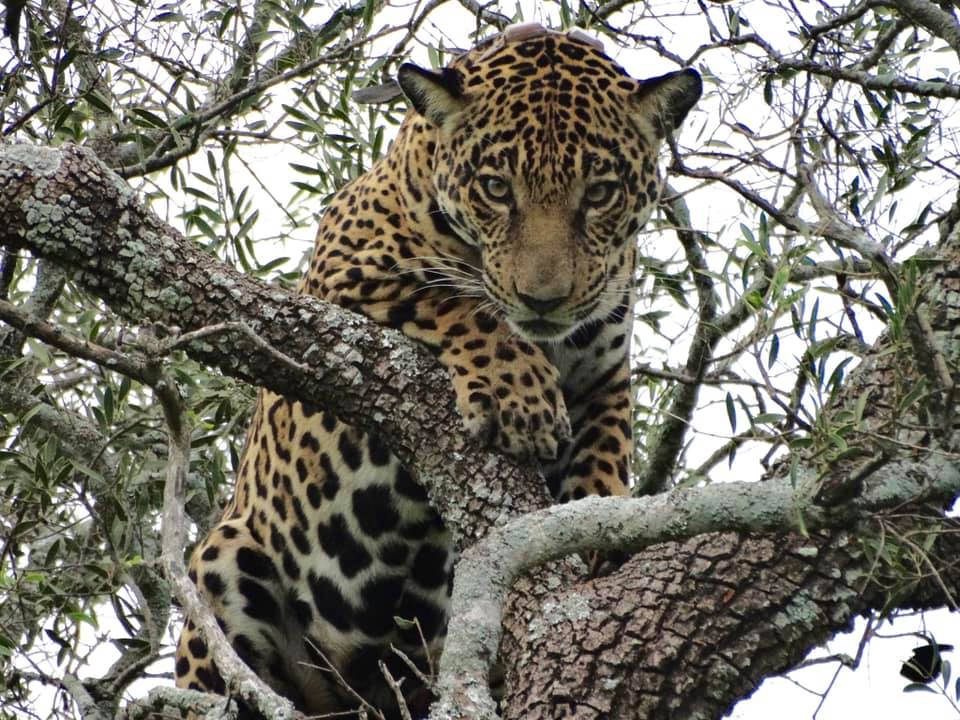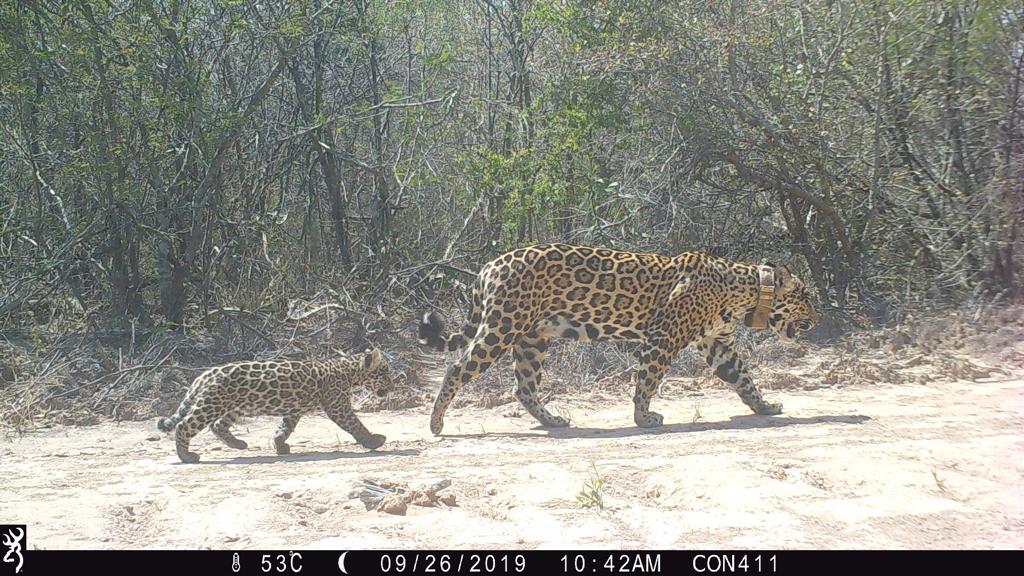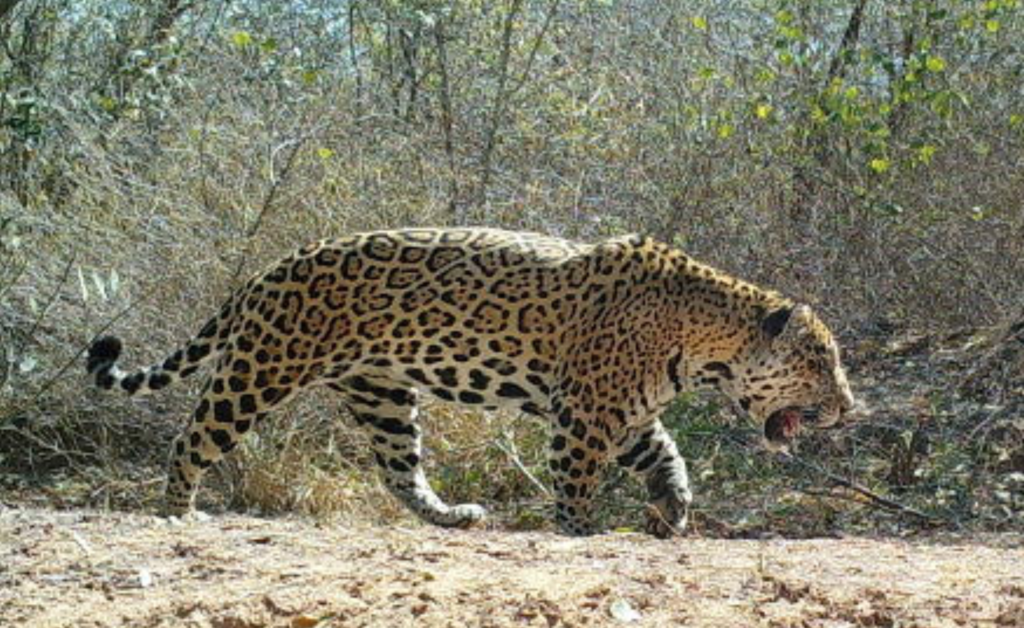Q&A Blog | International Jaguar Day
Jeffrey Thompson
Check out the International Jaguar Day Q&A blog with Dr. Jeffrey Thompson, a scientist in the National Science and Technology Council of Paraguay studying the effects of agricultural land use on wildlife in austral South America!
As a Jaguar Scientist, what led you to study this species? How did you find out you were interested in it?
It is a bit of a long story but since childhood I was interested in large cats. In my graduate studies the role of apex carnivores in affecting trophic interactions was a theme that was always present in my research of the effects of land use on wildlife. With time, my research started including the ecology of jaguar prey species which led to research on jaguars.

A treed jaguar with a GPS telemetry collar in a tree before be immobilized to change its collar (credit: Rocky McBride)
Along with your colleagues, you undertook a telemetry study of jaguar in the Dry Chaco around your camera traps as well. What was the most interesting part of your experience while undertaking this study?
My collaborator Rocky McBride had been collecting telemetry data on jaguar since 2002. Together with others, we undertook additional telemetry where we concurrently were collecting data with camera traps. An interesting aspect of this ongoing research is how you can see how much individual jaguars can differ in their behavior. Also, with the telemetry and the camera traps we were able to document when females den, how long until cubs start to travel with their mothers, and how females’ space use changes when they have cubs.

A GPS collared jaguar preying upon a caiman at a waterhole in the Paraguayan Dry Chaco (credit: Guyra Paraguay, CCCIPY, JJ Thompson, M Velilla, JM Campos Krauer.
Being the co-organizer of the Symposium on the Ecology and Conservation of the Jaguar and other Neotropical Cats. What message do you want to spread when constructing, hosting, and teaching in this event?
Although the focus of this meeting is to bring together jaguar researchers to share their research and experiences with conservation initiatives, for the upcoming meeting we are placing and emphasis on incorporating students and early career stage researchers to promote their participation.
After studying and working with these carnivores for years, are there any misconceptions the general public has about jaguars that you are eager to clear up?
The biggest misconception is that jaguars are to be feared. It is natural for someone to think that a large carnivore like the jaguar would pose a threat but, unlike tigers, lions, and leopards, there is no evidence for unprovoked attacks by jaguars. Certainly, they need to be respected, but not feared.

Female jaguar and cub in the Paraguayan Dry Chaco (credit: Rocky McBride Guyra Paraguay, JJ Thompson, M Velilla)
As a researcher, what do you think are the essential qualities needed to observe these big cats successfully?
To observe them the biggest factor is generally luck. To study them successfully requires persistence while remaining positive and to not be frustrated when things do not go as planned

A male jaguar in the Paraguayan Dry Chaco (credit: Guyra Paraguay, CCCIPY, JJ Thompson, M Velilla, JM Campos Krauer)
In what way do jaguars provide wisdom to human beings when displaying a solution-oriented, patient, and respectful mindset?
I’m not really sure how to answer this as I do not like to anthropomorphize wildlife behaviors. I will say that for me, studying jaguars, having the opportunity to see them in the wild, and to be able to touch them when we undertake captures, gives an added level to my reverence for the natural world.
What challenges did you encounter throughout your years of research as a Jaguar scientist?
As for most conservation work, the biggest challenge is obtaining sufficient funding to undertake and apply research. This problem is further exacerbated by corruption and weak government institutions typical of jaguar range states. Moreover, sometimes the egos of other researchers, their lack of humility, territoriality, and gatekeeping can hinder successful research and conservation actions.
